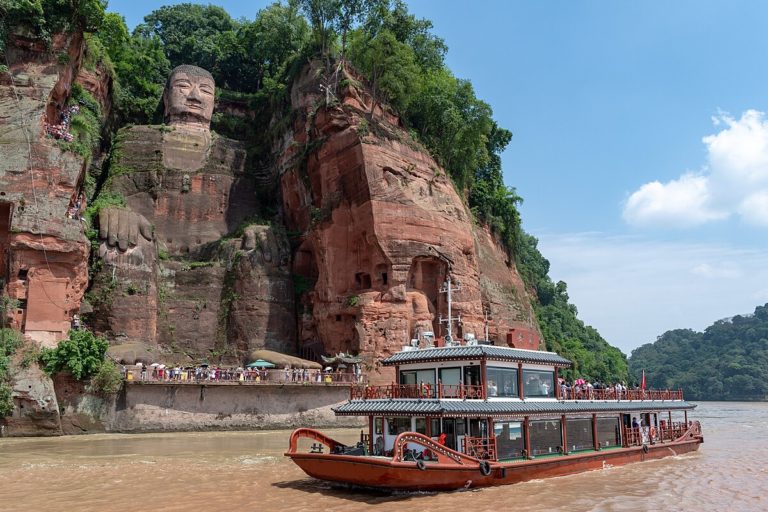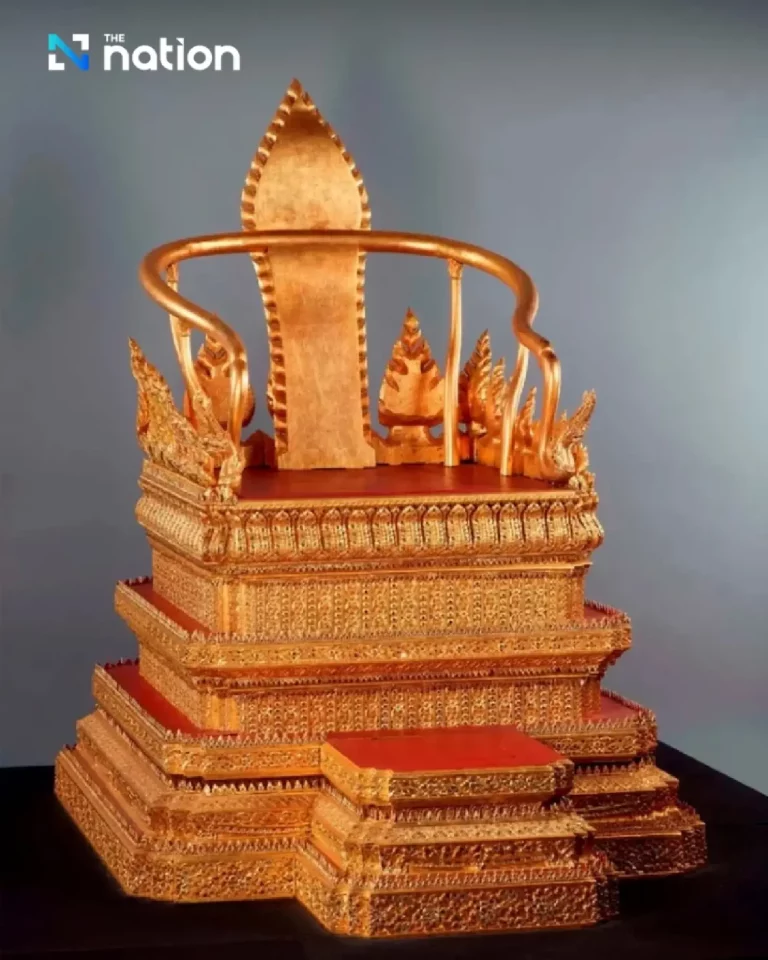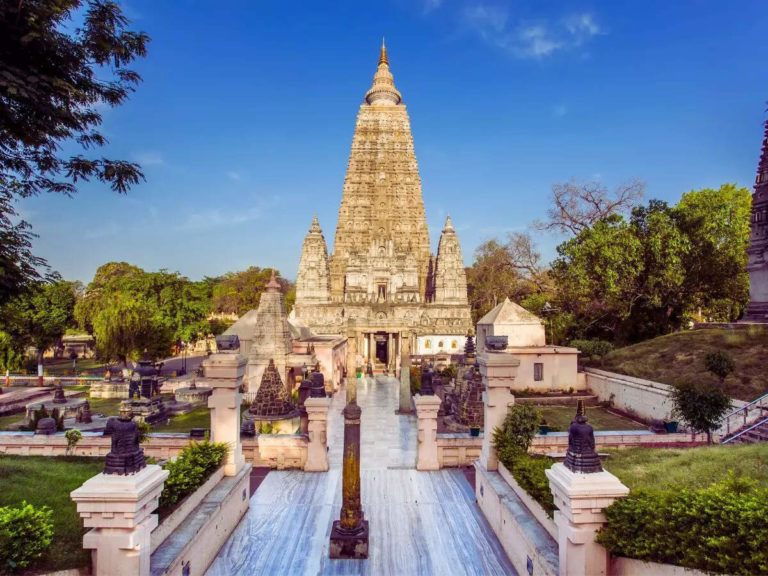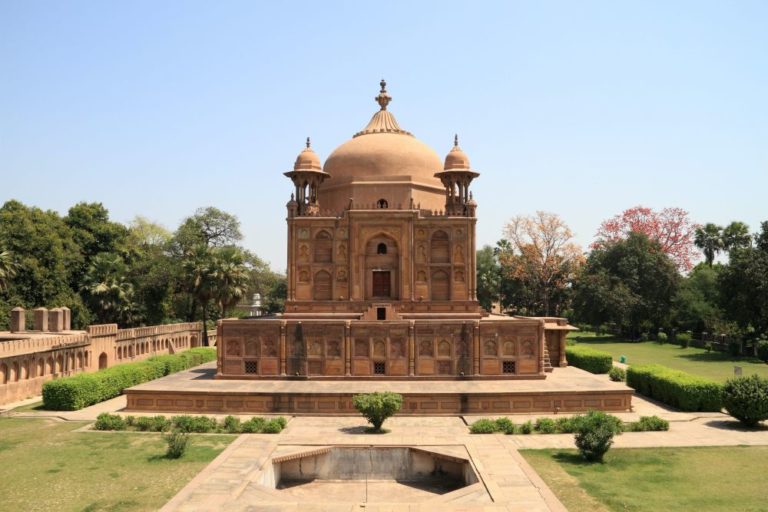A stunning view at Seokbul Temple in Busan / Courtesy of Dale Quarrington
By Dale Quarrington

Busan’s Seokbul Temple in 2004 / Courtesy of Dale Quarrington
The first time I visited Seokbul Temple back in the spring of 2004, it took my breath away. And every visit since, it has continued to amaze me with its utter beauty. While some temples can run together into one indistinguishable memory, Seokbul Temple isn’t one of these. Situated among the clouds, high above Busan in the southern foothills of Mount Geumjeong (801.5 meters), Seokbul Temple is simply stunning.
Seokbul Temple, which means “Stone Buddha Temple” in English, was first constructed around 1930. Originally, it was known as Byeongpung Hermitage, which means “Folding Screen Hermitage” in English. The original name of the temple comes from its very location. Located on Mount Geumjeong, the folds of the mountain’s rocks comprise a large part of the temple’s grounds. However, with the creation of 20 large stone reliefs in the 1960s, it changed its name from Byeongpung Hermitage to Seokbul Temple.
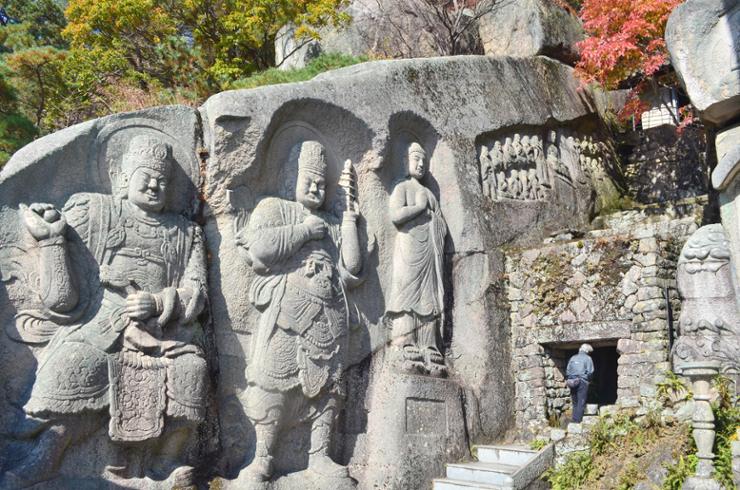
Making your way up the steep paved road, and past the sentry-like bell pavilion that jets out from the face of the temple’s front facade, you’ll notice a gray metal entrance gate with a manja (swastika-like) symbol on it. This was the former cave entrance that would bring you directly to the outdoor U-shaped sanctum that houses the 20 stone reliefs. Unfortunately, this entry is now closed to the general public. But if you look down, you’ll see a stone gwimyeon (monster mask) face that was meant as a boot cleaner.
Continuing your ascent, and to the left, you’ll next come to the Iljumun Gate. Adorning the gate is a pair of intertwining dragons on the underside of the archway to the gate. They are both attempting to place wisdom pearls into their mouths.
Just beyond this gate — and the reason I previously mentioned that Seokbul Temple is a temple among the clouds — you get beautiful views of Busan off in the distance. And on really clear days, you’ll actually be able to see Gwangan Bridge.
A little further along, at a collection of stone buildings, you’ll see part of the reason why Seokbul Temple has its name. The first of these buildings is the two-story main hall. The first floor acts as the Daeung-jeon Hall with a solitary image of Seokgamoni-bul (Historical Buddha) on the main altar. And inside the second story of this structure are hundreds of bronze statues with the central image of Birojana-bul (Buddha of Cosmic Energy) on the main altar. If you look up at the eaves of the exterior walls of this two-story structure, you’ll notice stone sculptures of dragons and phoenixes. It’s not every day that you get to see stone images of these creatures. Typically, they are painted on the surfaces of the exterior walls of temple shrine halls.

Some of the reliefs at Seokbul Temple in Busan / Courtesy of Dale Quarrington
There’s a collection of structures out in front of the two-story main hall that includes a large stone pagoda, a stone lantern, a Jongnu Pavilion with a wonderful Brahma Bell and a rickety bell pavilion overgrown with moss.
But it’s to the immediate right of the two-story main hall, and up a flight of stairs, that you’ll find the central highlight of the temple. And if you look closely, you’ll find the former undergrown entrance to the temple grounds down and to the left.
Overcoming the stairs, you’ll finally enter the inner U-shaped sanctum at Seokbul Temple that houses the 20 stone reliefs that date back to the 1960s. Straight ahead, and in the center of the lower part of the sanctum, you’ll find an 11-headed relief dedicated to Gwanseeum-bosal (Bodhisattva of Compassion). This ornate relief is reminiscent of the one found inside the historic Seokguram Grotto in Gyeongju. On either side of this main altar image of Gwanseeum-bosal is a collection of 10-meter-tall reliefs. To the left, you’ll find two of the Four Heavenly Kings joined by Birojana-bul. And to the right are the two other Heavenly Kings, as well as Yaksayeorae-bul (Buddha of Medicine, and of the Eastern Paradise). Looking up in awe of all of these high reliefs, you can’t help but think that these are some of the most beautiful in Korea. Superlatives just don’t capture just how stunning they truly are.

Stone reliefs in a U-shaped inner sanctum at Seokbul Temple in Busan / Courtesy of Dale Quarrington
In addition to these reliefs, numerous little caves punctuate the rocky, mountainous terrain. It’s only when climbing the steep, narrow stairs that you come across a collection of 16 reliefs of the Nahan (Buddha’s historical disciples). There are eight reliefs on either side of the central image of Seokgamoni-bul. Finally having climbed all the steep, imprecisely cut, stone stairs, you’ll come to a shaman shrine hall that houses images of both Dokseong (Lonely Saint) and Sanshin (Mountain Spirit). This part of the temple grounds, especially in the fall, is crowned by the autumnal hues of the maple trees that turn red, orange and yellow.
There used to be a narrow, rocky passageway that you could pass through to get to a stone plateau to the right of the Dokseong/Sanshingak Hall, but now a metal gate seals it off to the general public. It was probably for safety reasons, just like the former subterranean entry at the temple, that these areas were ruled off-limits by the temple. It’s too bad, in a way, because it created unusual experiences and spectacular views from Seokbul Temple.

A woman prays at Seokbul Temple in Busan. Courtesy of Dale Quarrington
Seokbul Temple is one of those temples you venture to when you’re in need of something a little different. While still difficult to get to, it isn’t nearly as difficult, or as unknown, as it formerly was just a couple of decades prior. Seokbul Temple is a beautiful blend of nature, views and Buddhist artistry in western Busan.

